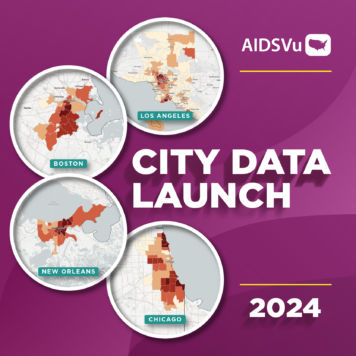We sat down with Dr. Brian Mustanski, Director of the Northwestern University Institute for Sexual and Gender Minority Health and Wellbeing and Professor of Medical Social Sciences in the Feinberg School of Medicine, to talk about the importance of tailoring HIV prevention resources specifically for at-risk youth.
Q: As a clinical psychologist, what role do mental health services play in addressing the HIV epidemic among adolescents? What have you found effective in your research?
A: As psychologists, we’re trained in providing skills and motivation for people to change their behaviors, and we have played a key role in the research on the HIV epidemic—understanding who’s at risk, understanding what puts people at risk, and how to help protect them. Many of the important behavioral interventions that have been developed for HIV prevention have been developed by psychologists. Psychologists also play the role of service providers, providing mental health services to young people who are affected by HIV. We know that mental health is an important part of HIV and that there’s a lot of unmet mental health needs for people living with HIV.
One of the things that I’ve worked on is to put HIV education and prevention in the context of people’s real lives and relationships. For example, Northwestern just launched the “SMART Project,” an online sex education program developed in English and Spanish for 14- to 18-year-olds, to learn about HIV prevention and HIV testing, but also to learn about sexual health and overall healthy romantic relationships. The project addresses HIV as part of a broad sexual health perspective that isn’t just about HIV – it’s about healthy romantic relationships that are free of violence or coercion, where people have mutual respect. You can follow the project on Twitter @SMART_squad in English and @proyecto_SMART in Spanish.
Q: In 2008, you started IMPACT: The LGBT Health and Development Program, which is now based within the Institute. What have you learned about educating the adolescent LGBTQ community about sexuality and health over the past decade?
A: When I started IMPACT 10 years ago there were a very small number of researchers that focused on teenage gay and bisexual youth and HIV. We’ve seen a substantial increase in researchers studying this, but we still need more science and more proven inclusive programs for sex education for youth. We have a long way to go to reach young people with the health education they need. Just last year, some young men who have sex with men participating in our focus group said that they didn’t need to use condoms because they couldn’t get pregnant, and data suggests that only 1 in 5 gay and bisexual teen boys have ever had an HIV test in their life. We need to do a lot more to make testing accessible and to provide education that meets the needs of LGBT youth.
As we think about research and services, I encourage everyone to join me in asking, how are we going to meet the needs of teenagers?
Q: IMPACT is working to train the next generation of LGBT health scholars. What trends have you seen in the academic community for new research?
A: Historically LGBT health has been a small field, but there have been some new developments that are changing that. For example, the NIH designated sexual gender minorities as a health disparity population, and there has been increased attention to LGBT issues overall. This focus has created a lot of opportunities for young people to get involved in adolescent sexual health. I’m excited by how many of the young scholars that I work with are interested in parts of our community that have received very little research, such as the bisexual and trans communities. Bisexuals are the largest part of the teen queer community, yet there’s very little research that’s been done. Learning more about transgender youth is another key area where we’ve seen an explosion of interest from young scholars.
Q: With the rise of the opioid epidemic, what trends are you seeing in new HIV infections from injection drug use among young people?
A: I think it’s an important question that we really don’t have a pulse on quite yet. I see numbers that are wildly all over the place when it comes to opioid use in LGBT youth or young gay and bisexual men. We do toxicity screens in our RADAR cohort study of over 1,000 young gay and bisexual men, and very few of them show up positive for opioids and very few of them report using opioids or injection drugs. This is a specific sample though, and there is a lot of work that needs to be done.
Q: With National Youth HIV/AIDS Awareness Day around the corner on April 10, what do you hope to see adolescents doing to get involved?
A: One of the things that we really like to emphasize on this awareness day is the right that young people have to get tested for HIV and other sexually transmitted infections. It is still surprising to a lot of young people that they can legally go and get an HIV test without their parents’ permission or their doctor’s permission.
And all year long, whenever I’m in a room of people talking about HIV, I’m often the person that raises their hand and says, “Well, what about teenagers?” Young people are really the only group showing an increase in new infections, and we know many of them get infected in their teenage years. I am always encouraging researchers and physicians to take a minute to assess their programs and information and ask how useful and accessible it is for teenagers. For example, do you require an ID or other documentation for services? Many young people do not have access to these. As we think about research and services, I encourage everyone to join me in asking, how are we going to meet the needs of teenagers?




